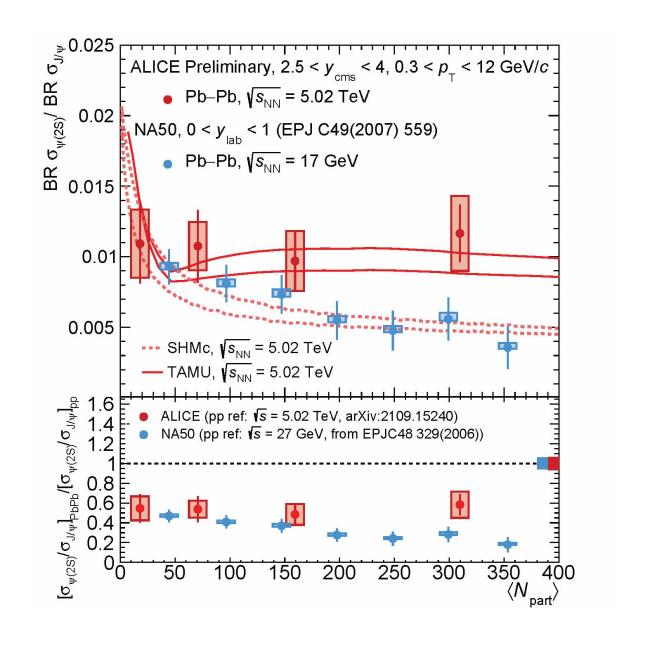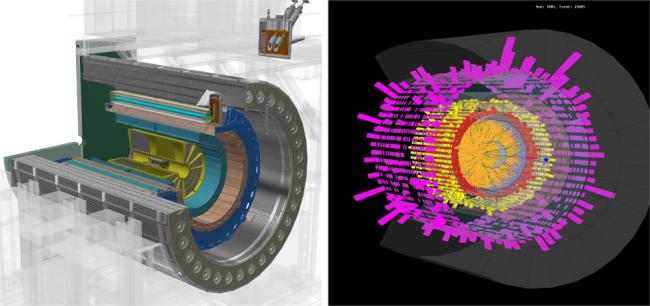Heavy Flavor Production in Heavy‐Ion and Elementary Collisions

Note to applicants: This is a "hybrid" program, meaning there will be a combination of virtual and in-person participants. In the COMMENTS section of the Application Form, please write [In-person], [Virtual], or [Either] to reflect your preferred mode of attendance. Please be aware that all in-person participants must show proof of vaccination against COVID-19 upon arrival to the INT.
Disclaimer: Please be aware that due to ongoing concerns regarding the COVID-19 pandemic, this program may be changed from a hybrid program to online-only.
Heavy flavor probes of the Quark-Gluon Plasma are required to realize the heavy-ion physics programs of the LHC and the new and final RHIC experimental program, sPHENIX. Both these facilities have heavy flavor physics as a priority, with a particularly strong focus on bottomonium and jet production, including heavy flavor jets at sPHENIX. In order to take full advantage of these heavy flavor probes, theoretical advances, including lattice QCD calculations, are needed and will be discussed during the program. In addition, the Electron-Ion Collider at BNL will rely on heavy flavor probes to carry out its physics program, including understanding the gluon distribution in the nucleus. First attempts of extracting the gluonic gravitational form factors from measurements of J/psi at threshold are under analysis and results should be available by the time of the program. Finally, considerations of a 20 GeV upgrade at JLab would allow for high precision measurements of the psi(2S) and open charm near threshold, a region still relatively unexplored, but with significant consequences on future EIC measurements and interpretation of gluonic observables including the origin of the proton mass, its mass radius and charmonium absorption in cold nuclear matter.
The study of cold nuclear matter effects in p+A collisions complements that of the e+A program at the EIC since any factorization scheme that applies to p+A will also apply to e+A. Understanding quarkonium and open heavy flavor production in p+p and e+p collisions is complementary to our program. For example, the quarkonium production mechanism and the consequent polarization is a long standing issue affecting both nuclear and particle physics. Heavy flavor physics is also essential to the description of high energy cosmic rays. The program will touch on all these issues.
FORMAT
One or two talks are envisioned in the morning each day of the program, leaving the afternoon free for collaborative work and focused discussions, except for a three day period in the third week. Talks in the morning, with ample discussion time for each talk, and afternoons free for discussion and collaboration is ideal and one of the most attractive aspects of the INT.
The topics covered by the program each week are as follows:
week 1: dynamical models of quarkonium and heavy flavor production in heavy-ion collisions
week 2: heavy flavor and quarkonium production in p+p, e+p, p+A and e+A collisions, including near threshold production
week 3: Workshop covering topics from weeks 1, 2 and 4
week 4: transport and spectral properties of quarkonium and open heavy flavor from lattice QCD and effective field theory-based approaches
Please note: a registration fee may apply for Week 3 (the workshop week)

Heavy Flavor Production in Heavy‐Ion and Elementary Collisions
Photo courtesy of the ALICE experiment

Heavy Flavor Production in Heavy‐Ion and Elementary Collisions
Photo courtesy of the ALICE experiment

Heavy Flavor Production in Heavy‐Ion and Elementary Collisions
Photo courtesy of the ALICE experiment

Heavy Flavor Production in Heavy‐Ion and Elementary Collisions
[Ann Rev. Nucl. Part. Sci. article, [1903.07709] Open Heavy-Flavor Production in Heavy-Ion Collisions (arxiv.org).]

Heavy Flavor Production in Heavy‐Ion and Elementary Collisions
V. Cheung and R. Vogt, Phys. Rev. D 104, 049026 (2021)

Heavy Flavor Production in Heavy‐Ion and Elementary Collisions
2015 Long Range Plan

Heavy Flavor Production in Heavy‐Ion and Elementary Collisions
Courtesy of BNL

Heavy Flavor Production in Heavy‐Ion and Elementary Collisions
Photo courtesy of the ALICE experiment

Heavy Flavor Production in Heavy‐Ion and Elementary Collisions
Photo courtesy of the ALICE experiment
